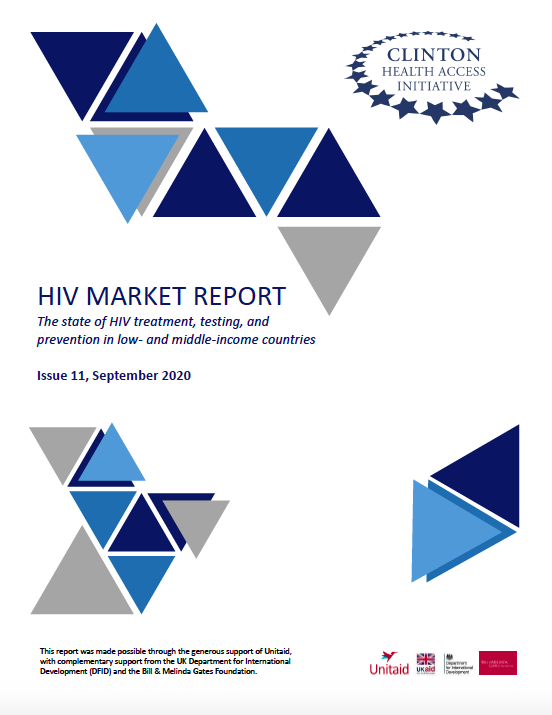CHAI is pleased to release the 11th issue of our annual HIV market report. The report provides a detailed look at the complex, ever-changing antiretroviral (ARV) and diagnostic markets in low- and middle-income countries based on aggregated market intelligence from our programmatic work in over 30 countries.
Download the 2020 HIV Market Report
2020 was already a consequential year in the HIV space before the COVID-19 pandemic swept across the globe. It is the deadline for countries to have reached the 90-90-90 target set by UNAIDS in 2014, which is that by end of the year, 90 percent of people living with HIV would know their status, 90 percent of those who know their status would be on treatment, and 90 percent of those on treatment would be virally suppressed.
Even prior to COVID-19, it was almost certain the world would not achieve this target on time as only 14 countries had met it by the end of 2019. However, COVID-19 disrupted the entire HIV cascade to services critical to meeting each target. From drops in HIV testing and viral load volumes as clients avoid clinics, to interruptions in ARV supply chains and HIV prevention outreach due to lockdowns across the globe, COVID-19 has slowed global progress made against HIV.
Despite the challenges the community is facing in 2020 and beyond, there are bright spots reflecting the resilience of people living with HIV (PLHIV) and those involved in the global response against HIV/AIDS. The transition to tenofovir/lamivudine/dolutegravir (TLD) continues in earnest, with over six million PLHIV on this optimal regimen by the time of publication. The rollout of multi-month dispensing, long championed as a way to deliver differentiated care, has been scaled up in many places to reduce the potential for patient and healthcare worker exposure to COVID-19. The provision of advanced HIV disease care packages including treatment such as flucytosine (5FC) jumpstarted in 2019 as well as the hosting of virtual healthcare worker trainings continues in many countries, despite COVID19-related delays.
While there is no doubt thatCOVID-19 has disrupted HIV services and stalled progress toward the 90-90-90 targets, the global HIV community has experienced challenges before and resolved them. CHAI is hopeful that programs will bounce back stronger than before with increased program resiliency.
CHAI’s mission is to ensure rapid access to the best health products at affordable and sustainable prices for patients in resource-limited settings. CHAI supports partner governments in scaling up their HIV response by working toward high quality and cost-effective treatment, testing, and prevention for all people living with HIV/AIDS. On the supply side, CHAI aims to support a reliable and transparent marketplace for HIV drugs and diagnostics to ensure a sustainable supply of life-saving health commodities for patients.





